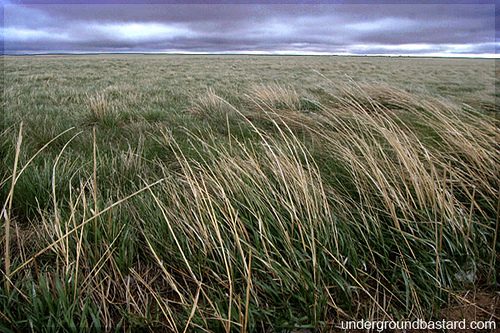Home Sweet Home! (Habitat)
WHERE DOES THIS ORGANISM LIVE?
This organism lives everywhere, with the exclusion of the polar
regions. You already know that ergot is a parasitic fungi, so
its habitat is dependent on where the host organisms live. Its
host include open-pollinated plants, like cereal grains
and and forage grasses. Some of the most commonly infected and
well known plants include plants like rye, wheat, and
barley. So, because
of where its hosts live, one could accurately assume that it
occurs most commonly in the grasslands of the world. There are
also three groups that the species is divided into based on their slightly different habitats. The three groups
are named cleverly as G1, G2 and G3. G1 is the most broad of the
three groups, living on land grasses with few habitat
restrictions. The G2 group is a little more specific, living on
land grasses that live in a wet and shady environment. G3 has
the most narrow host range of the distinct groups, living on
land grasses only in salt marsh habitats.
their slightly different habitats. The three groups
are named cleverly as G1, G2 and G3. G1 is the most broad of the
three groups, living on land grasses with few habitat
restrictions. The G2 group is a little more specific, living on
land grasses that live in a wet and shady environment. G3 has
the most narrow host range of the distinct groups, living on
land grasses only in salt marsh habitats.
HOW IS ERGOT DISTRIBUTED?
Claviceps purpurea is immotile, so it relies on other means
to distribute itself. When this fungus is living on it's host, it
produces asexual spores by means of conidia. It then secretes its
conidia in a substance called honeydew, which, just like it sounds,
it a very thick liquid. This is good because then the honeydew gets
on insects that land on the plant and spreads when the insect goes
and lands on other plants. This honeydew mixture is also easily
spread when raindrops fall and splash it onto other plants.
WHAT OTHER KINDS OF ORGANISMS LIVE IN ITS HABITAT?
As I stated above, this organism inhabits A TON of different
habitats around the
world, so there are a bunch of different
 organisms that it could potentially live with. Obviously, it lives
with open-pollinating grasses, insects, and
other wild animals, such as
deer.
One interesting thing that I realized as I was doing my research was
that I came across quite a few Canadian sites. Many of these sites
were about controlling this parasite, which led me to do some more
research and I discovered that indeed, it shares a habitat with
moose. My dad LOVES Canada and moose hunting, so that's the first
animal I think of when I think of Canada. Also, this fungus can be a problem
when it infects one's crop of barley, rye, or wheat. In this case,
some more domesticated animals, like
cows and
horses, may be living
in its habitat.
organisms that it could potentially live with. Obviously, it lives
with open-pollinating grasses, insects, and
other wild animals, such as
deer.
One interesting thing that I realized as I was doing my research was
that I came across quite a few Canadian sites. Many of these sites
were about controlling this parasite, which led me to do some more
research and I discovered that indeed, it shares a habitat with
moose. My dad LOVES Canada and moose hunting, so that's the first
animal I think of when I think of Canada. Also, this fungus can be a problem
when it infects one's crop of barley, rye, or wheat. In this case,
some more domesticated animals, like
cows and
horses, may be living
in its habitat.
HOW DOES THIS ORGANISM FIT INTO ITS SPECIFIC NICHE?
Claviceps purpurea always parasitizes open-pollinated
plants, like the examples stated above. This is their specific
niche. To learn more about how and why these organisms are the hosts
for Claviceps purpurea, make sure to check out the
NUTRITION page!
Also be sure to check out this website if you want to know how to control this fungus if it infects your crops!